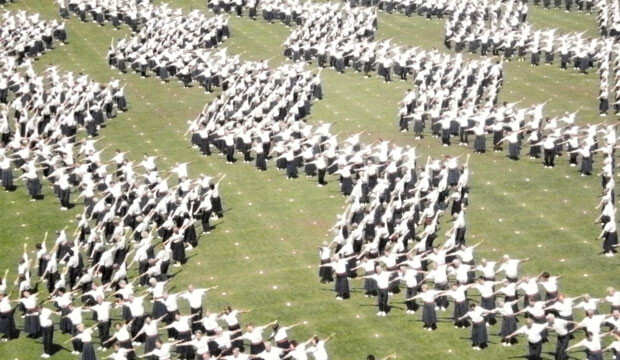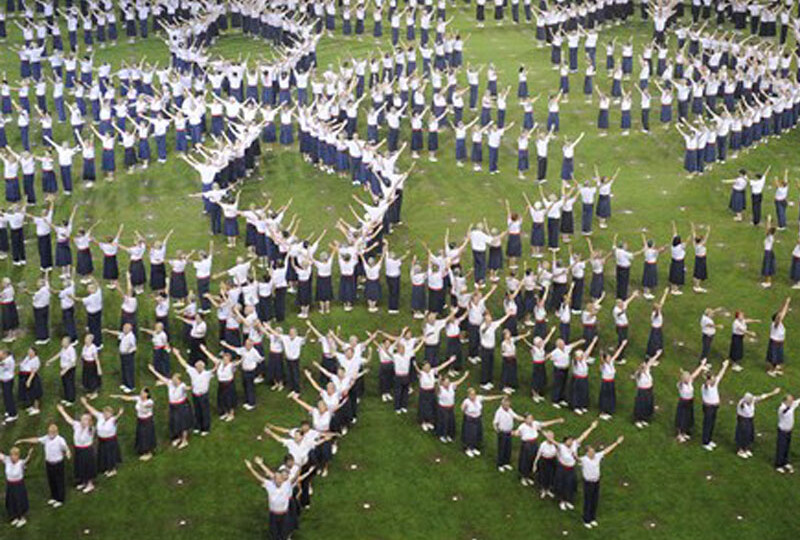Pohled odjinud
Festivalové snímky pohledem zahraničních kritiků - Dům je černý íránské režisérky Forúgh Farrochzád
Radical Humanism and the Coexistence of Film and Poetry in The House is Black
Úryvek z rozsáhlého analytického textu známého kritika Jonathana Rosenbauma se věnuje íránskému snímku Dům je černý režisérky Forúgh Farrochzád. Autor poukazuje na obvinění, kterým musela režisérka ve své domovině čelit kvůli zobrazování nemocných, pozastavuje se nad jejím přístupem k realitě a rozebírá i spojení fikce s dokumentem a poezie s filmem. Rovněž usazuje snímek do kontextu íránské nové vlny a srovnává ho i s filmy režisérčina krajana Abbáse Kiarostamího.
Defying the standard taboos and protocols concerning lepers — especially the injunction to avoid physical contact with them for her own safety — Forugh Farrokhzad wound up permanently adopting a boy in the colony named Hossein Mansouri, the son of two lepers, who appears in the film’s final classroom scene, taking him with her to Tehran to live at her mother’s house. Yet some of the film’s first viewers criticized it for exploiting the lepers — employing them as metaphors for Iranians under the shah, or more generally using them for her own purposes and interests rather than theirs.
When I first heard about the latter charge I was shocked, for much of the film’s primal force resides in what I would call its radical humanism, which goes beyond anything I can think of in western cinema. It would be fascinating as well as instructive to pair The House is Black with Tod Browning’s 1932 fiction feature Freaks — which oscillates between empathy and pity for its real-life cast of midgets, pinheads, Siamese twins, and a limbless “human worm,” among others, and feelings of disgust and horror that are no less pronounced. By contrast, Farrokhzad’s uncanny capacity to regard lepers without morbidity as both beautiful and ordinary, objects of love as well as intense identification, offers very different challenges, pointing to profoundly different spiritual and philosophical assumptions.
At the same time, any attentive reading of the film is obliged to conclude that certain parts of its “documentary realism” (perhaps most obviously, its closing scene in a classroom, as well as the powerful shot of the gates closing, which occurs just before the end)–working, like the subsequent films of the Iranian new wave, with nonprofessionals in relatively impoverished locations — must have been staged as well as scripted, created rather than simply found, conjuring up a potent blend of actuality and fiction that makes the two register as coterminous rather than as dialectical. (Much more dialectical, on the other hand, is the relation between the film’s two alternating narrators — an unidentified male voice, most likely Golestan’s, describing leprosy factually and relatively dispassionately, albeit with clear humanist assumptions, and Farrokhzad reciting her own poetry and passages from the Old Testament in a beautiful, dirgelike tone, halfway between multi-denominational prayer and blues lament.)
This kind of mixture is found equally throughout Kiarostami’s work, and raises comparable issues about the director’s manipulation of and control over his cast members. Yet without broaching the difficult question of authors’ intentions, it might also be maintained that the films of both Farrokhzad and Kiarostami propose inquiries into the ethics of middle-class artists filming poor people and are not simply or exclusively demonstrations of this practice. In Kiarostami’s case, it is often more obviously a critique of the filmmaker’s own distance and detachment from his subjects, but in Farrokhzad’s case, where the sense of personal commitment clearly runs deeper, the implication of an artist being unworthy of her subject is never entirely absent.
Jonathan Rosenbaum
Pipeline
Poeticky laděný text Elizabeth Kerr z The Hollywood Reporter se věnuje snímku Roura Vitalije Manského. Popisuje způsob, jakým Mansky pracuje se sibiřskou krajinou i jejími obyvateli, a zdůrazňuje pochmurnou výpověď snímku i přes to, že v něm absentují otevřené politické komentáře.
A documentary tracking a single artifact or person from one community to another isn’t a new concept to the form, but Vitaly Mansky’s (Our Motherland, Patria O Muerte) chronicle of the disparate lives and experiences on the route of a Russian gas pipeline is as enlightening as it is novel. Veteran documentarian Mansky’s epically minded (but without the epic running time) Pipeline takes an observational journey from Siberia, across Russia and into Europe along the Urengoy-Pomary-Uzhhorod gas line, and in doing so illuminates real life along the way. It’s not the kind of feel-good or ironically infuriating doc that generally receives a wide release, but documentary festivals and similarly themed television outlets should show considerable interest.
The wildly varied levels of affluence, infrastructure and comfort in the towns along the pipeline are at the heart of Pipeline, and for the most part it’s a tough life at the very least. As he heads west Mansky proves that it’s the pipeline indeed that connects the people and places, with several subtle and moving asides. From the reporter discussing a monument to gas workers in Siberia to reindeer herders and their games, and from a makeshift priest who’s crafted a church from a derelict boxcar to a couple getting married on the border between Europe and Asia, the camera lets any hopelessness and disillusion speak for itself. There’s no overt rage, but when the reindeer herders comment on the scores of dead fish they’re catching, the pipeline and its payload looms larger than ever, however silently. Mansky steers clear of sermonizing or politicizing the material, but as with the fish sequence, it’s hard not to draw one’s own negative conclusions about the drastic inequalities and perhaps their root causes among the half dozen locations he stops in.
Aside from the residents living on the line, the star of the film is Aleksandra Ivanova’s elegant and unadorned cinematography that makes the (sometimes) blistering cold and sheer vastness of the country palpable, while visually capturing what makes each location distinct.
Elizabeth Kerr – The Hollywood Reporter


